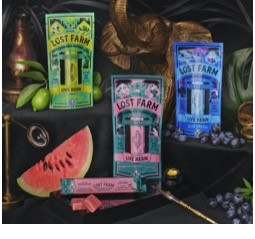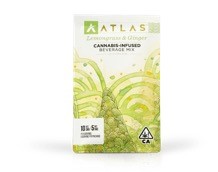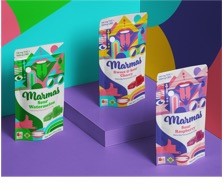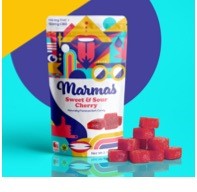It was just 2015 when cannabis-infused edibles resembling the most popular candy brands were being sold in four U.S. states. Products with names such as “Keef-Kat,” “Oeo,” “Buddahfinger,” and others were nearly direct rip-offs of famous legacy favorites.
It’s obvious that such packaging would cause all sorts of problems. Parents were alarmed at the temptation this packaging (and the products) posed to kids. Brand owners, such as Hershey, took legal action to remove these imposters from the shelves. In the Wild West era from which these executions arose, all was permissible until it wasn’t. Dosage, in fact, sometimes ran at four times the potency considered safe.
At the time, The New England Journal of Medicine recommended “restricting the extent to which marijuana edibles can look and taste like familiar sweets … ” for the good of all. Over the ensuing years, their recommendations have been followed. But, judging by the renaissance of edible and beverage packaging and marketing in recent times, rather than inhibit a new industry, such restrictions led to creative growth.
A Category on Fire
There is no denying that the demand for cannabis-infused edibles and beverages has experienced explosive growth. A recent Forbes piece had this to say, “Globally, our projection for 2020 was $19.6 billion and for the U.S., it was $16.1 billion … a growth of 33%. The big news is that the U.S. market for cannabis has grown faster than that. We haven’t gotten a final number but it’s going to be $18 billion or slightly more. The impact of COVID-19 has been very substantial and positive for the cannabis industry. For next year, we expect the U.S. market to top $24 billion.”
As for the power of brands, the article said, “Consumers do tend to prefer brands that are widely familiar and do a good job in marketing. We’ll see the first national brands (those sold in 10 states or more) in 2021. That’s a new phenomenon and part of the vigorous growth we are seeing in the industry.”
Three Brands at the Cutting-Edge of the Design Renaissance
Think about design in the candy industry. How much has Reese’s or Mars changed the look of their iconic brands? God forbid you’d alienate loyal consumers! But cannabis edibles and beverages offer a whole new landscape on which to leave a mark and establish new iconic brands.
One can’t help but be impressed by the polished look and feel of some of the prominent names in the category — not to mention the tie-in many have to social responsibility. Here are some of my favorites.
KIVA
 This brand has always communicated quality. Just compare recent redesign to the previous packaging and you’ll see they are not holding back. The beauty of KIVA is that its brand positioning and visuals align perfectly with the overall product quality.
This brand has always communicated quality. Just compare recent redesign to the previous packaging and you’ll see they are not holding back. The beauty of KIVA is that its brand positioning and visuals align perfectly with the overall product quality.
KIVA has been a market leader in cannabis edibles for years, and Kiva’s Lost Farm product line proves once again they are not afraid to push the boundaries of design and their brand promise.
Atlas
With a line of edibles and beverages, Atlas products are largely packaged in beautifully-designed pouches. Product lines include bars, granola clusters and beverage mixes. The beverages come in fruit-flavors such as pomegranate, lemongrass ginger, raspberry and hibiscus as well as chamomile and mint. All cannabis-infused drinks feature natural ingredients and can be served up as teas or cold refreshers. For Millennials and Gen Z consumers who have been moving away from carbonated sodas, brands like Atlas offer an alternative to Coca-Cola and Pepsi.
 What is interesting about this brand is their partnership with the art community. According to founder, Ezra Malmuth, “In addition to the distinctive ingredients in each cluster, Origin, Ember, Nimbus, and Stratus are also packaged in individual designs commissioned by local artists.” Malmuth says that the cannabis industry’s welcoming stance on culinary creativity made him feel it would naturally translate to visual artists as well.
What is interesting about this brand is their partnership with the art community. According to founder, Ezra Malmuth, “In addition to the distinctive ingredients in each cluster, Origin, Ember, Nimbus, and Stratus are also packaged in individual designs commissioned by local artists.” Malmuth says that the cannabis industry’s welcoming stance on culinary creativity made him feel it would naturally translate to visual artists as well.
“When I got into this space, a lot of my artist friends started getting displaced,” he says. “It inspired me to offer this outlet, to engage local artists to expand their horizons.”
The designs include the work of artist Peggy Crovetto. “Her markings are intimately personal. … Crovetto takes the chaos of life around us and distills in into a Zen rhythm.” Many of the Atlas products carry her unique mark and appeal to both hippy-era Boomers and younger consumers who respond well to the artsy look and feel of the brand.
Marmas
 A 2020 Clio winner for packaging design, Marmas puts a neo-psychedelic spin on their packaging. The brand incorporates images associated with cannabis culture such as eyedroppers, the iconic leaf on a tongue and neon colors for a Peter Max-like motif—all done in a stylized manner, by mixing geometric edges with soft, flowing, almost cartoon-like shapes.
A 2020 Clio winner for packaging design, Marmas puts a neo-psychedelic spin on their packaging. The brand incorporates images associated with cannabis culture such as eyedroppers, the iconic leaf on a tongue and neon colors for a Peter Max-like motif—all done in a stylized manner, by mixing geometric edges with soft, flowing, almost cartoon-like shapes.
The design of the product itself is just as luscious. In a recent, glowing review in White Rabbit, we are told that the edible looks and tastes so good, you have to be careful not over ingest. There is no hay-like flavor to spoil the taste. It’s pure candy deliciousness.
How to Emulate their Success
Each of the above illustrates an important point. KIVA, Atlas and Marmas all leveraged creativity, social responsibility and partnerships to establish a popular position with consumers. For any cannabis brand that seeks to achieve this kind of success, here are a few pointers:
- Choose a design standard that speaks to your target consumer. KIVA’s sophisticated packaging communicates quality. They use embossing, elegant fonts and they integrate the marijuana leaf in ways that are unique to the brand and the category overall. As a result of this effort and the quality of their product, they’ve become a staple in dispensaries across the landscape.
- Partner with local or regional artists. Atlas is not the only brand doing this, and the effort definitely pays off. It demonstrates their commitment to the communities they serve, and it appeals to consumers — the Boomers and the younger generations.
- Be bold: Don’t be afraid to reference the psychedelic wonder of the product, but do it in a contemporary, hip way. Marmas succeeds in this. Their look takes the 60’s and gives it whole new spin. They took a chance and won a Clio. Point made.
If there is a positive note coming out of the “COVID situation,” it’s that cannabis actually had significant growth. Now that states are getting their regulatory acts together, and packaging reflects those mandates (child safety, clearly marked dosages, etc.) the path is clear for a competitive playing field for brands.
The industry has definitely left its Wild West days behind, but it’s still a fairly new category and wide open to creativity and building the next generation of iconic brands.



 Tom Newmaster
Tom Newmaster


















